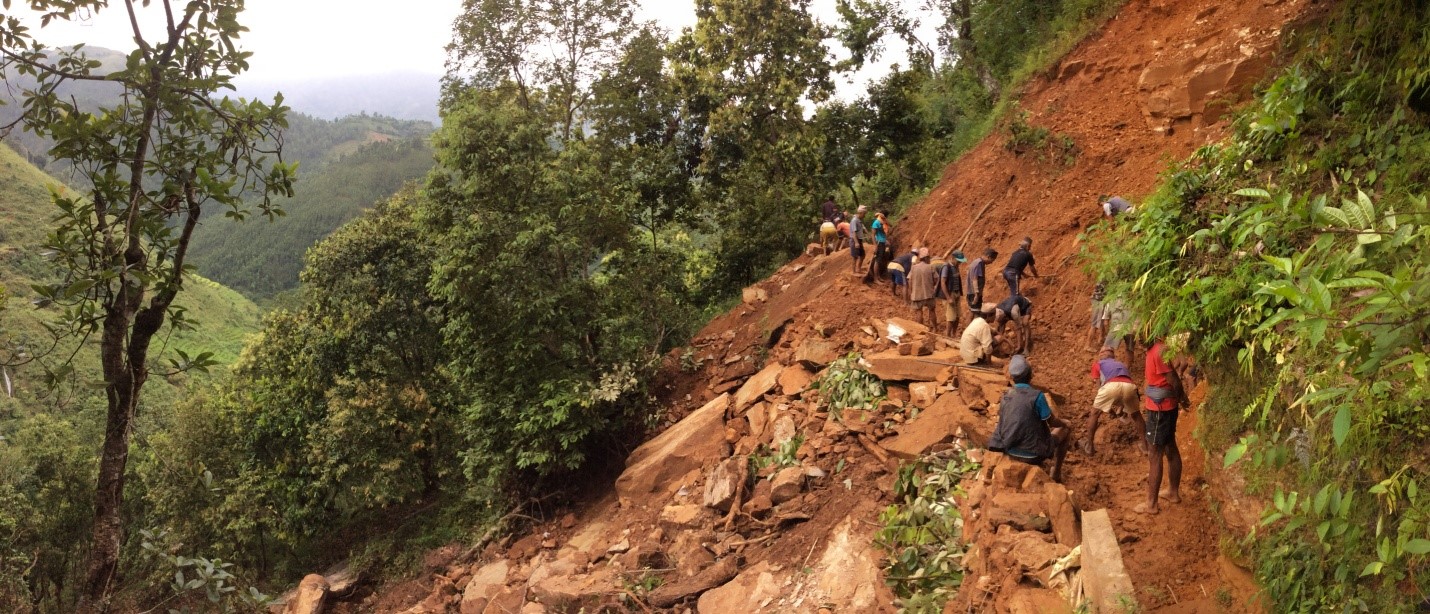
A year of fun and excitement — and learning the challenges facing farmer-managed irrigation systems.
As I stepped down from a rusty pickup truck, a group of farmers greeted me and asked: “Would you like to see how we have been rehabilitating our canal?”
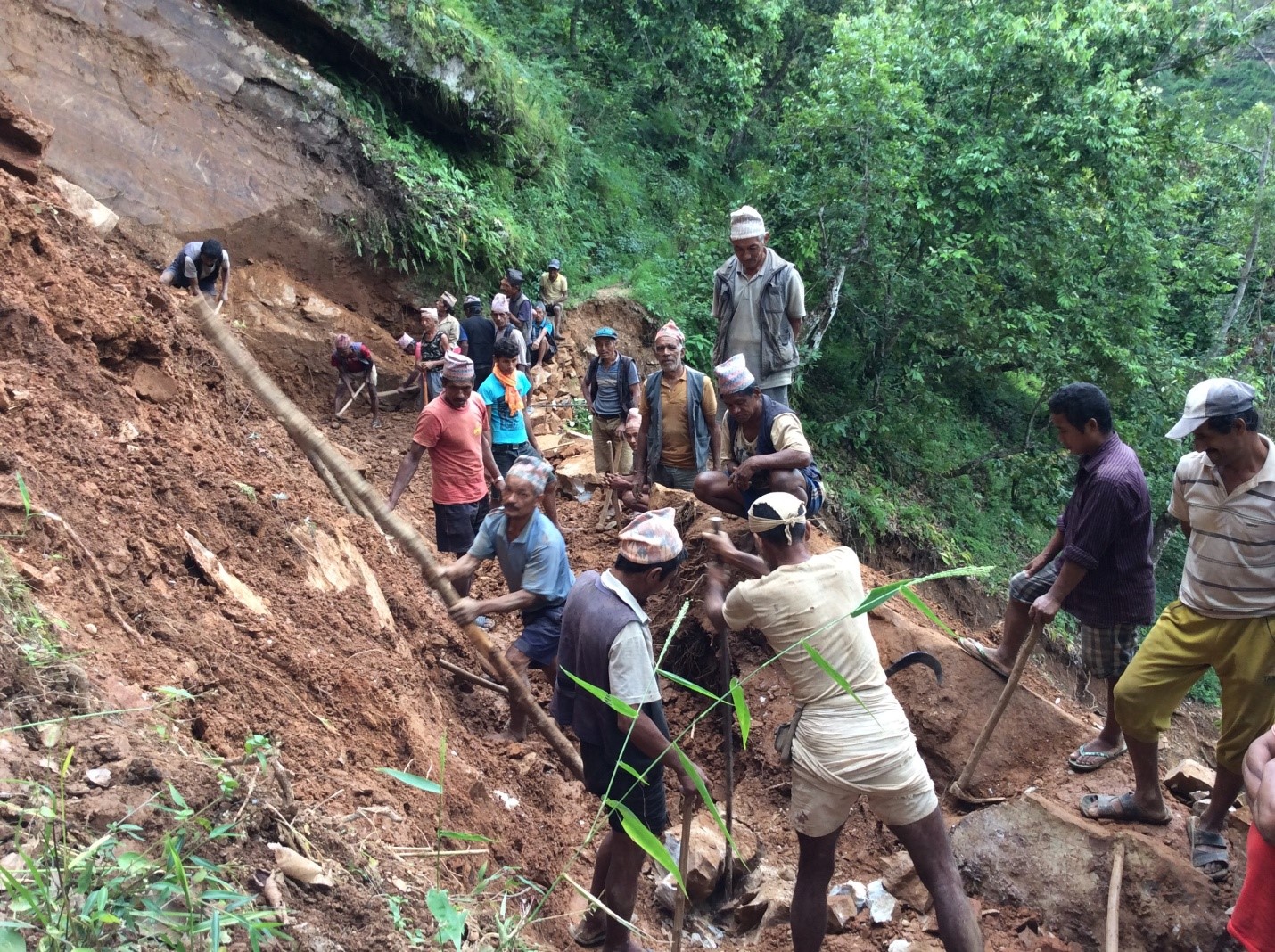
“Sure, that’s what I’m here for,” I replied, full of enthusiasm.
A few farmers walked me through the forest trail in a remote village in Dhading district – Khalte Village Development Committee (V.D.C.). After 10 minutes, I began to hear the faint sound of a sledgehammer hitting rock. Soon, I saw a fascinating scene of a group of about 30 farmers – old and young, men and women – who were working collectively to rehabilitate their village canal. Females were busy taking out the debris from the canal while men were engaged in clearing up the rocks that had fallen off the cliff.
These are the type of cases that I want to examine for my Ph.D. field research. I am studying how the farmer-managed irrigation systems in Nepal are coping with and adapting to climatic and non-climatic stresses. What is so unique about these systems is that they are mostly constructed and operated by the farmers with almost no support from the government, and yet have stood the test of time. For students like me who have only read about sophisticated irrigation infrastructure constructed and operated by government, I am really amazed that even in the 21st century, more than 20,000 such systems in Nepal are managed by farmers, and are mostly made with local materials.
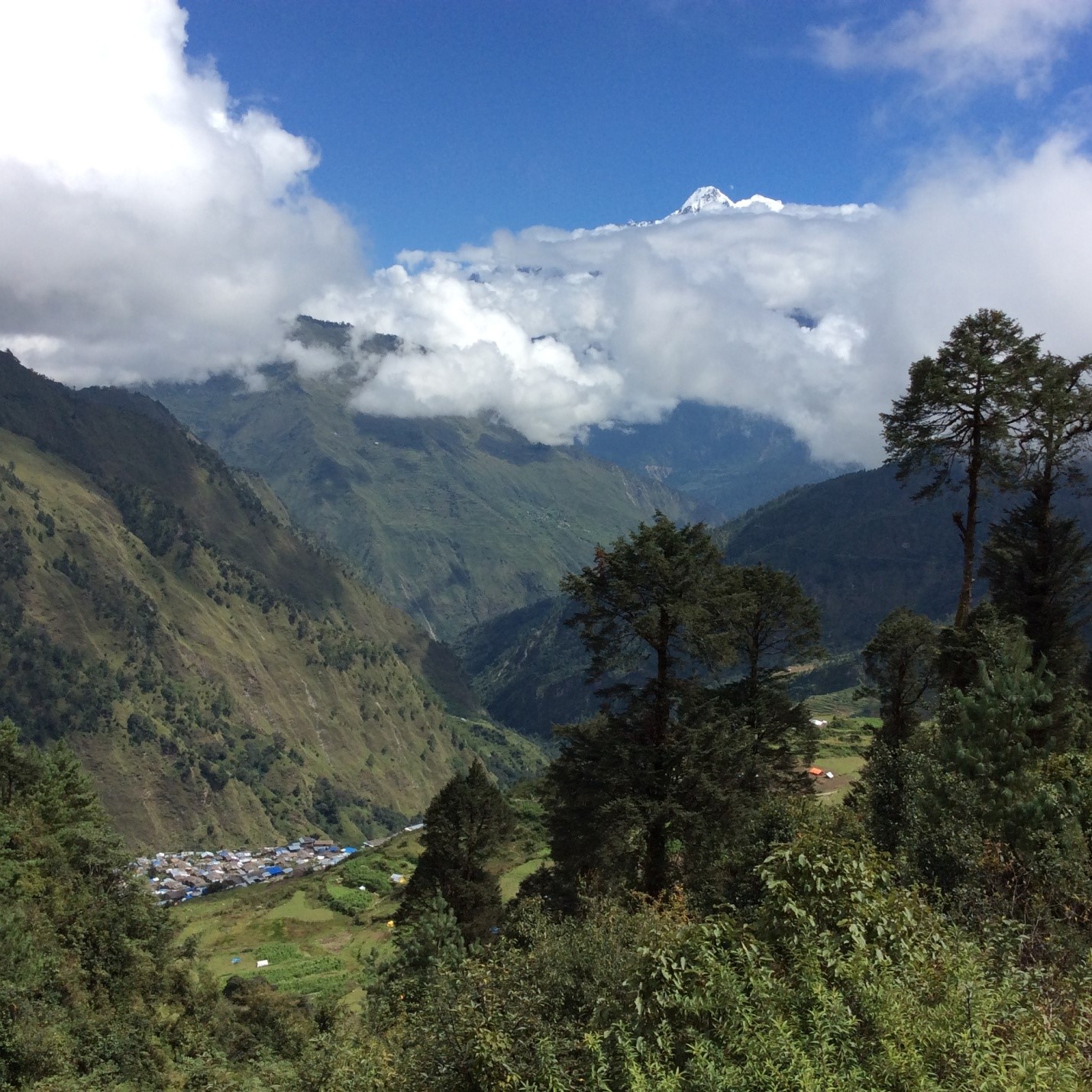
Rasuwa District.
The past nine months spent doing field research really gave me the opportunity to travel to remote places, where I gained profound insights about irrigation governance and village life. I still remember when I travelled for almost 12 hours to Gatlang, a remote village on the high mountains of Rasuwa district in central Nepal. After a back-breaking, rugged journey on a motorbike, I felt so peaceful when I reached the top of the mountain and saw a serene hamlet on the lap of the snow-capped mountains. The village seemed so remote, with bare physical amenities and a pace far from hectic urban life, but still so full of joy and contentment all around. Though villagers had hardly any good clothing in these cold conditions, each of them greeted me with big smiles and warm hospitality, and taught me some subtle and important lessons of contentment.
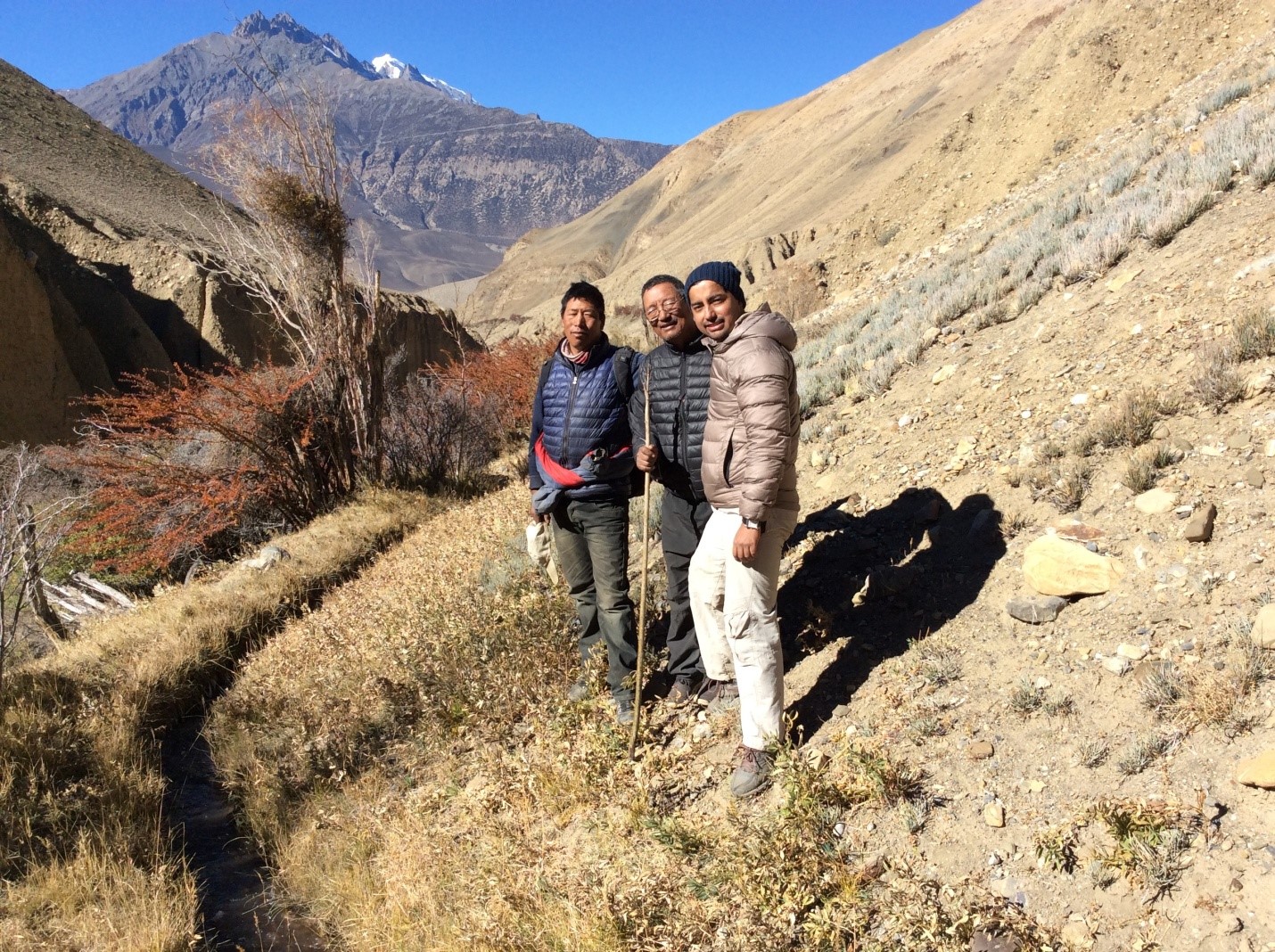
Mustang district
When I visited their farmland and asked questions about their canals, many welcomed me with open arms. One day, I randomly entered the house of a farmer in Devighat village of Nuwakot district while he was about to have his lunch. His house had been damaged by the 2015 earthquake and he was living in a temporary shelter in the courtyard. Despite this, as soon as he saw me he asked, “How are you? Please have lunch with us.” I was baffled by his greeting. I am a complete stranger whom he met just a few minutes ago, but still he immediately opened up his heart to me without any reservations. There were countless memories like this one throughout my fieldwork and they have made deep impressions on me.
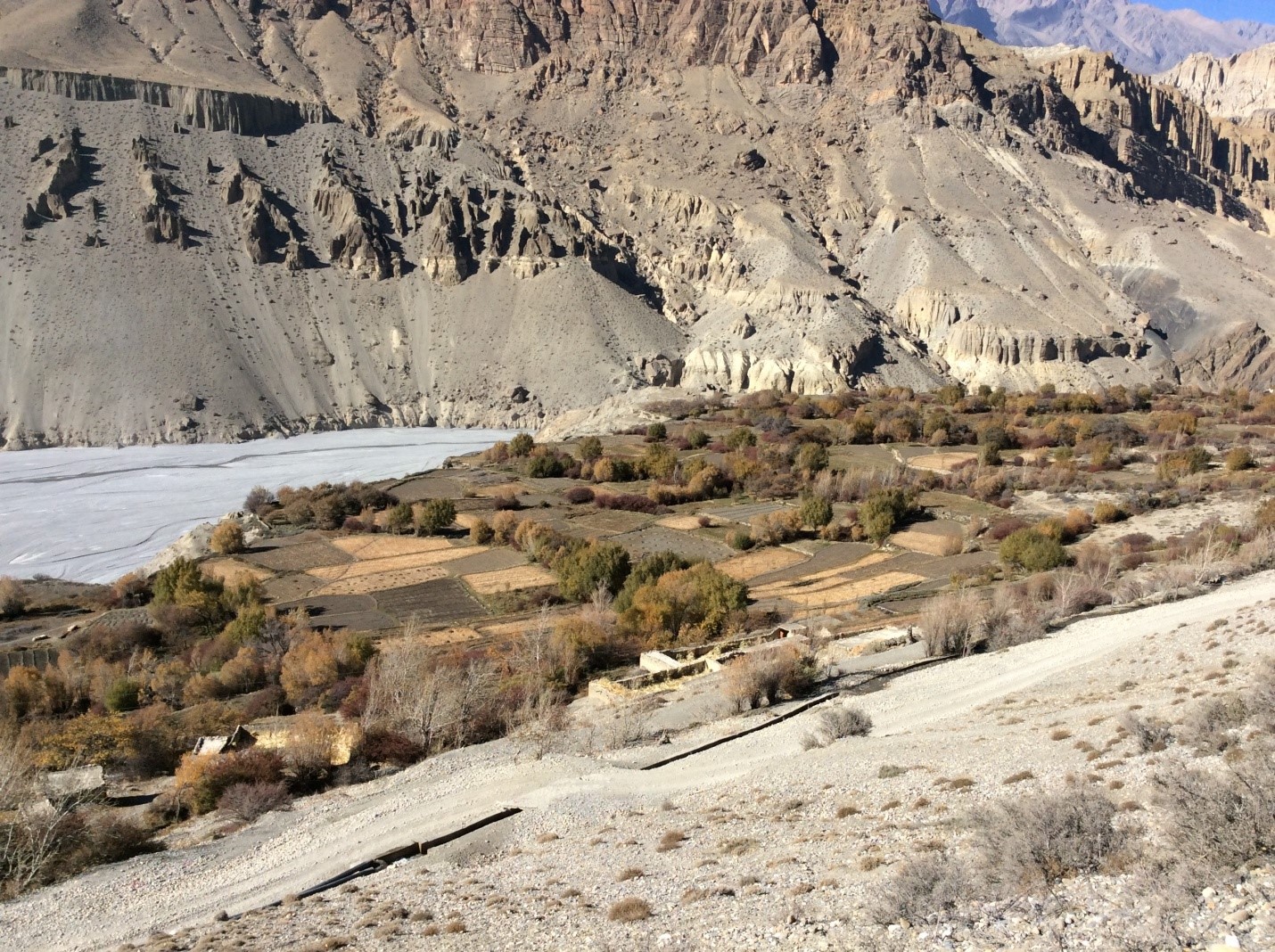
are irrigated by canals managed by farmers.
Nonetheless, life was not always easy. In some places, farmers were sceptical about the household data I was collecting and were reluctant to give me any information. I had to patiently explain my case and listen to their concerns and frustrations. Also, it was not easy to get farmers’ time for my long questionnaire, so I had to fit my visits into their schedules and conduct my interviews either early in the morning or late in the afternoon. For some villagers, an inquiry by an outsider also generated an expectation that I would be able to fix their old canals or bring funds for its maintenance. I had to deal with each of them thoughtfully and with weighted remarks.

As I interviewed more than 250 growers, I learned that farmers are very wise people who have rich experience about their agricultural practices and irrigation systems. They may not know academic jargon like “adaptation” and “climate resilience,” but they have been managing climatic risks for generations using their local knowledge. These experiences will be vital as they continue to face severe stresses in the near future. I also had to constantly remind myself that I was in the field to learn from the farmers. Only when I went with an open mindset – or a learning attitude and a patient mentality – did I begin to understand the core issues of water governance.
I am now back in Tucson, Arizona, with large datasets and many pages of field notes. Over the next few months, I plan to analyze these materials and produce something useful to the farmers, as well as to policy makers and academia. I personally thank my wife, family members, local field staffs, farmers, ICIMOD researchers, and UA faculty members for their constant encouragement and support.
Bhuwan Thapa is a Ph.D. candidate in the School of Geography and Development at the University of Arizona, an IWSN team member at the Udall Center for Studies in Public Policy, and a HI-AWARE Ph.D. Fellow at the International Centre for Integrated Mountain Development (ICIMOD), Nepal. The work he describes is part of a multi-year Ph.D. study supported by the ICIMOD HI-AWARE Fellowship, IWSN, and a University of Arizona (UA) CLIMAS Fellowship.
All photos/maps: Bhuwan Thapa
